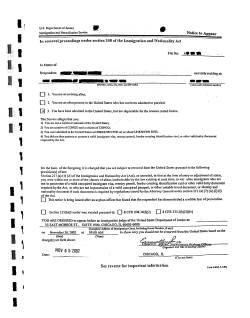
{ Diagnostic Teamwork: Why We All Need to Stick Together
3/4/2013
Diagnostic Teamwork: Why We All Need to Stick Together
{
GEAR UP!
Families & Professionals Working Together for Michigan’s Children Who are Deaf & Hard of Hearing
Introduction
To improve early identification of hearing loss and intervention services for children of all ages by providing a learning experience for parents and professionals
Purpose
1
3/4/2013
To provide practical information for parents/families about early diagnosis and intervention services for infants, children and youth who are deaf or hard of hearing
To increase the skills and knowledge base of professionals who work with children who are deaf or hard of hearing
Goals
Julie Carlson
Ellen Thomas
Anita Vereb
Introductions
The infant’s pediatrician, family physician, or other primary health care professional is in a position to advocate for the child and family.
Medical Home
2
3/4/2013
The infant’s pediatrician, family physician, or other primary health care professional is in the best
position to advocate for the child and family?
Medical Home
Primary Physician
Family/Child
Model
Prevalence of congenital hearing loss
~3‐4 per 1000
Size of average pediatric practice
~1500 patients
~80‐90 new patients per year
~1 new ID every few years
Problems with Model
3
3/4/2013
?
Primary Physician
Family/Child
Model
Family/Child
Model
Questions?
4
3/4/2013
1‐3‐6 Goals
Hearing Screening by 1 Month
Comprehensive Audiologic
Evaluation by 3 Months
Appropriate Intervention by 6 Months
Current State
Hearing Screening by 1 Month
27482/27622
98.2%
1 Month Goal
Comprehensive Audiologic Evaluation by 3 Months
39.3% Loss to Follow‐Up/Loss to Documentation Nationally
54.4% Loss to Follow‐Up/Loss to Documentation in Michigan
3 Month Goal
5
3/4/2013
Comprehensive audiologic
evaluation
http://www.michigan.gov/documents/
mdch/Final_guidelines_2012_409853_7
.pdf
3 Month goal
Comprehensive audiologic
evaluation
3 Month goal
Appropriate Intervention by 6 Months
What is appropriate intervention by 6 Months?
6 Month Goal
6
3/4/2013
Appropriate Intervention by 6 Months
30.6% Enrolled in Early Intervention in Michigan
66.5% Enrolled in Early Intervention Nationally
6 Month Goal
Appropriate Intervention by 6 Months
6 Month Goal
Questions?
7
3/4/2013
Otolaryngologist
Family/Child
Medical Evaluation
Medical Evaluation
Every infant with a confirmed hearing loss should be evaluated by an otolaryngologist who has knowledge of pediatric hearing loss” – JCIH 2007
Components of Otolaryngologic
Evaluation
Complete history and physical examination
Imaging
Consideration of genetic testing
Consideration of other diagnostic testing
Medical Evaluation
8
3/4/2013
Etiology of Congenital Hearing Loss
Available Studies
CBC
Platelets
ANA, RF, ESR
TSH
BUN, Cr, UA
Glucose
FTA‐ABS, RPR
EKG
Identified Causes
Leukemia
Fechtner Syndrome
Autoimmune
Pendred
Alport
Alstrom
Syphilis
Jervell and Lange‐
Nielsen
Historical Approach
Very low diagnostic yield
Mafong et al. 2002‐ 114 patients evaluated with full test battery
Multiple positives on routine laboratory testing, none associated with clinical disease
One prolonged QT‐ positive family history
Historical Approach
9
3/4/2013
Careful History
Focuses on acquired causes
Identification of Risk Factors
Family History
NICU Stay
In utero infections
Congenital Cytomegalovirus (CMV)
Current Approach
Current Approach
Physical Examination
Identify otologic abnormalities
Identify syndromic causes
Genetics evaluation may be helpful
Consideration of ophthalmology referral
Additional testing as indicated
Genetic Testing
Mutations in a single gene account for about half of non‐syndromic autosomal recessive hearing loss
GJB2 (Connexin 26)
Present in approximately 40% of patients with bilateral, severe to profound loss
Present in approximately 20% of patients with congenital hearing loss overall
Testing is widely commercially available
Current Approach
10
3/4/2013
Temporal Bone Imaging
Identifies diagnostic information in approximately 30% of children with hearing loss
Provides prognostic information
Risk of progression
May impact options for management
Current Approach
Temporal Bone Imaging
Careful history
Careful physical examination
Risk Indicators for hearing loss
Otologic Disease
Syndromic Conditions
Imaging of the Temporal Bones
Consideration of genetic testing/referral
Consideration of ophthalmology referral
Current Approach Summary
11
3/4/2013
What do you expect from the medical evaluation?
Medical Evaluation
Questions?
How do your roles change as children transition to the school system?
What new team members come on board?
What is working well?
What opportunities for improvement exist?
Transition to School
12
3/4/2013
Questions?
13
© Copyright 2025

















![Sample Discharge Letter [OALA Member Letterhead] [Date]](http://cdn1.abcdocz.com/store/data/000270059_1-7d1afe0f8ae3c23c82012e50e4411273-250x500.png)



